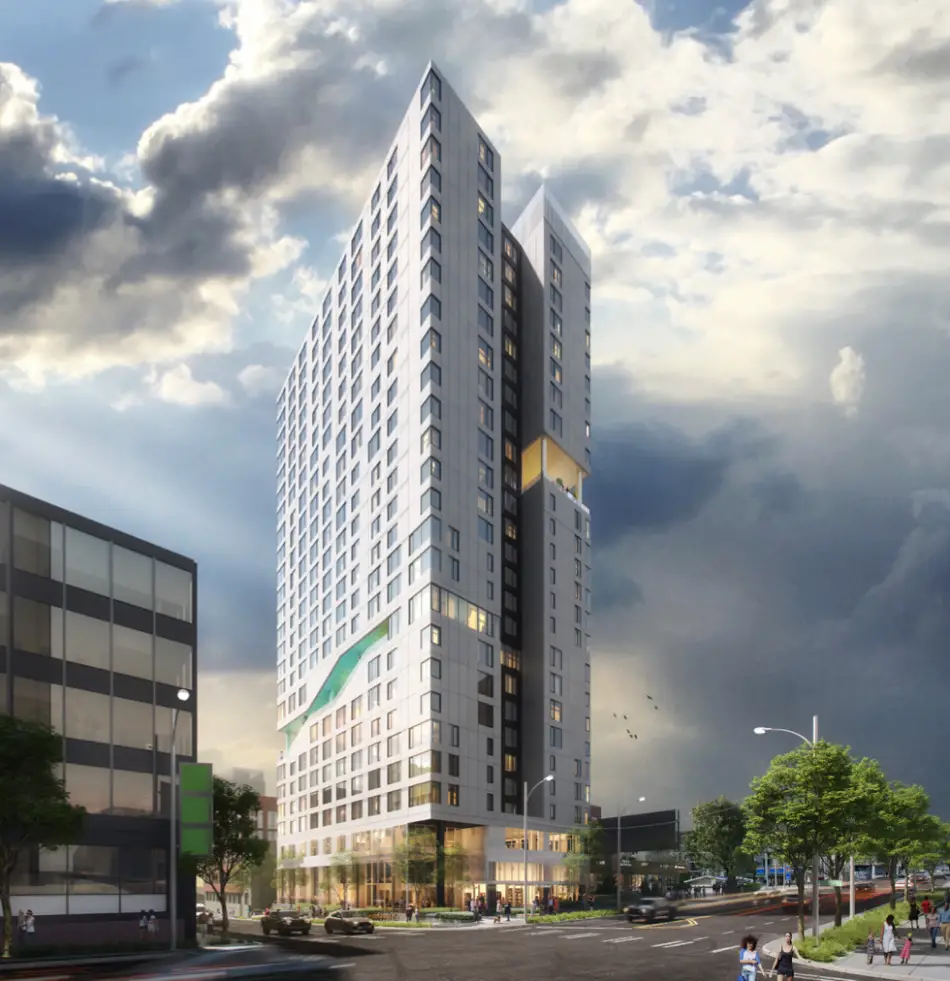Design plans have been availed for a 27-storey OneU Tower in Seattle. Set to be built on a 19,150 square foot block of property near the U-District light rail station in the U-District at 1013 NE 45th Street, which is now home to a Shell gas station, the project is designed by Hewitt.
It features 365 total units, with the majority of them being studio, one-, and two-bedroom apartments. Ten of the units will be 900 square feet in size and will consist of three- and four-bedroom flats. There will be about 9,500 square feet of office and shared workplace, as well as 1,687 square feet of commercial space and neighbourhood open space. There will also be 55 below-grade parking spaces and 296 bicycle parking spaces.
Also Read: Vulcan breaks ground on the Ondina apartment complex, Seattle
The OneU Tower in Seattle will take part in the city’s Multifamily Tax Exemption program, which will reserve a number of units for people earning less than the local median income in exchange for the building owner avoiding paying property taxes for 12 years.
Features of the 27-Storey OneU Tower in Seattle,
In contrast to normal high-rise common areas like a rooftop deck, which are destinations that need a deliberate effort to access, the goal behind these places is to give opportunity for accidental meetings. The “mid-rise social greenway” is placed between floors 7-9 on the east facade. The “high-rise social greenway” is located on the west side, between floors 16 and 18.
The plan incorporates “carved social greenways” to encourage social interaction, community gathering, and access to fresh air and sunlight. “The carved communal greenways give a sequence of outdoor, linear spaces that split the tower into smaller pieces, like stacking mid-rise structures on top of one another with outdoor common spaces between,” says Hewitt Principal Julia Nagele.
Hewitt finds novel solutions by rigorously investigating human constructions within historical, cultural, and ecological contexts. They concentrate our pooled experience and efforts on a variety of project kinds.

